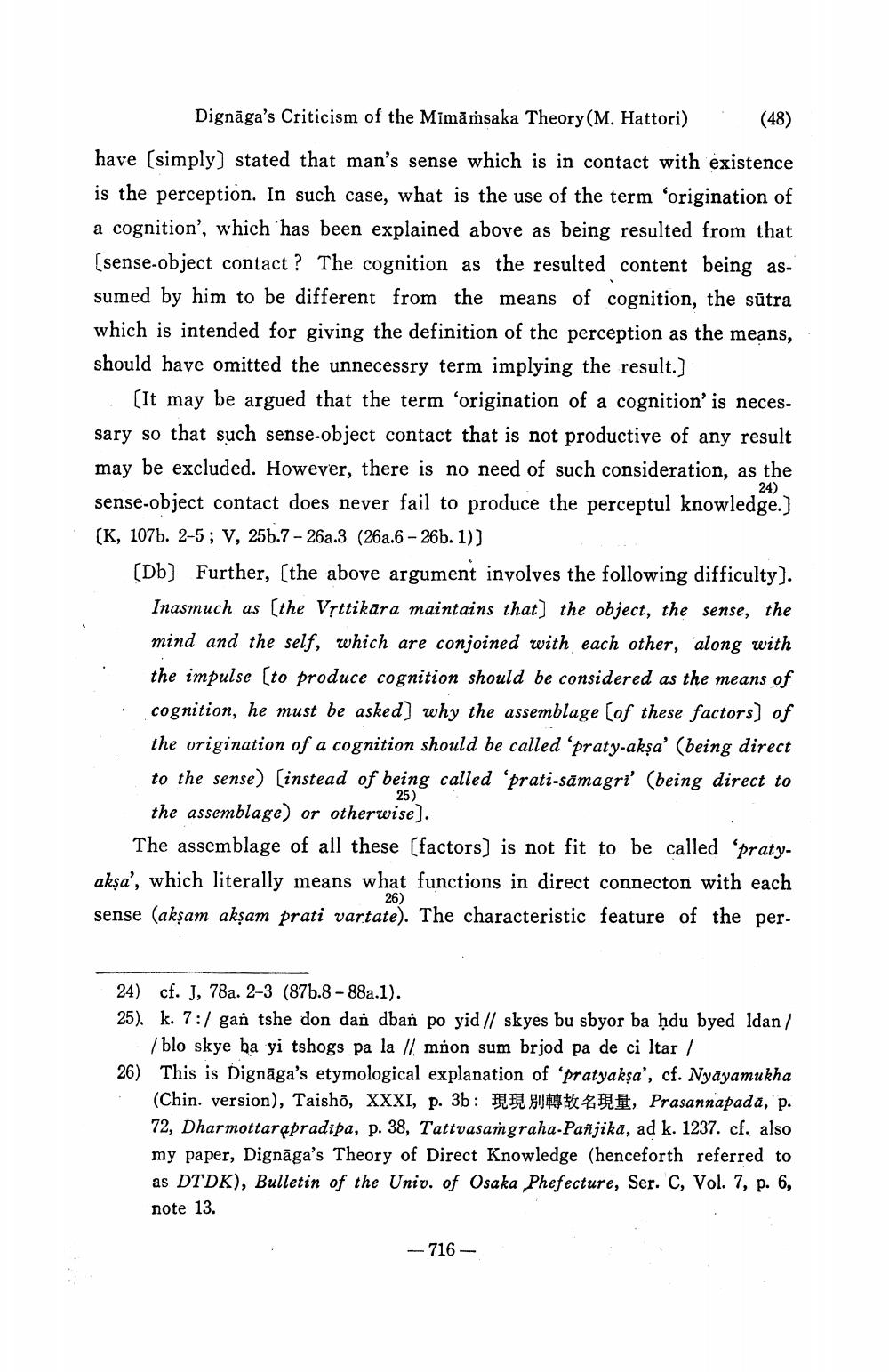Book Title: Dignagas Criticism Of Mimamsaka Theory Of Perception Author(s): Massaki Hattori Publisher: Massaki Hattori View full book textPage 9
________________ 24) Dignāga’s Criticism of the Mimāṁsaka Theory(M. Hattori) (48) have (simply) stated that man's sense which is in contact with existence is the perception. In such case, what is the use of the term ‘origination of a cognition', which has been explained above as being resulted from that (sense-object contact ? The cognition as the resulted content being assumed by him to be different from the means of cognition, the sūtra which is intended for giving the definition of the perception as the means, should have omitted the unnecessry term implying the result.) (It may be argued that the term origination of a cognition' is necessary so that such sense-object contact that is not productive of any result may be excluded. However, there is no need of such consideration, as the sense-object contact does never fail to produce the perceptul knowledge.) (K, 107b. 2-5; V, 25b.7 – 26a.3 (262.6 – 26b. 1)] (Db) Further, the above argument involves the following difficulty). Inasmuch as (the Vsttikāra maintains that the object, the sense, the mind and the self, which are conjoined with each other, along with the impulse (to produce cognition should be considered as the means of cognition, he must be asked) why the assemblage (of these factors) of the origination of a cognition should be called “praty-akşa' (being direct to the sense) (instead of being called 'prati-sāmagri (being direct to the assemblage) or otherwise). The assemblage of all these (factors) is not fit to be called 'praty. akşa', which literally means what functions in direct connecton with each sense (akşam akşam prati vartate). The characteristic feature of the per 25) 26) 24) cf. J, 78a. 2-3 (875.8-88a.1). 25). k. 7:/ gan tshe don dan dban po yid // skyes bu sbyor ba ḥdu byed Idan/ /blo skye ba yi tshogs pa la ll, mňon sum brjod pa de ci ltar / 26) This is Dignāga's etymological explanation of 'pratyakşa', cf. Nyayamukha (Chin. version), Taisho, XXXI, p. 3b: S h i, Prasannapada, p. 72, Dharmottarapradipa, p. 38, Tattvasamgraha-Panjika, ad k. 1237. cf. also my paper, Dignāga's Theory of Direct Knowledge (henceforth referred to as DTDK), Bulletin of the Unio. of Osaka Phefecture, Ser. C, Vol. 7, p. 6, note 13. - 716 -Page Navigation
1 ... 7 8 9 10 11 12 13 14
